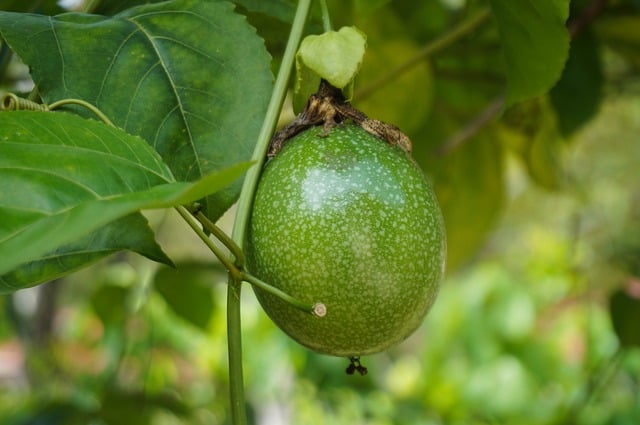Passion fruit is a tropical fruit that is known for its sweet and tangy flavor. The fruit is grown on a vine, and the leaves of the plant are an important indicator of the plant’s health. If you notice that the leaves of your passion fruit plant are turning yellow, it could be a sign of a problem.
Understanding why passion fruit leaves turn yellow is essential to maintaining the health of your plant. There are several potential causes of yellowing leaves, including watering and drainage issues, nutrient deficiencies, and diseases or pests.
By identifying the underlying cause of the yellowing, you can take steps to correct the problem and ensure that your passion fruit plant remains healthy and productive.
Key Takeaways on Passion Fruit Leaves Turning Yellow
- Yellowing passion fruit leaves can be a sign of a problem with the plant’s health.
- Common causes of yellowing include watering and drainage issues, nutrient deficiencies, and diseases or pests.
- Identifying the underlying cause of yellowing is essential to correcting the problem and maintaining the health of your passion fruit plant.
Also don’t miss:
Understanding Passion Fruit Leaves Yellowing
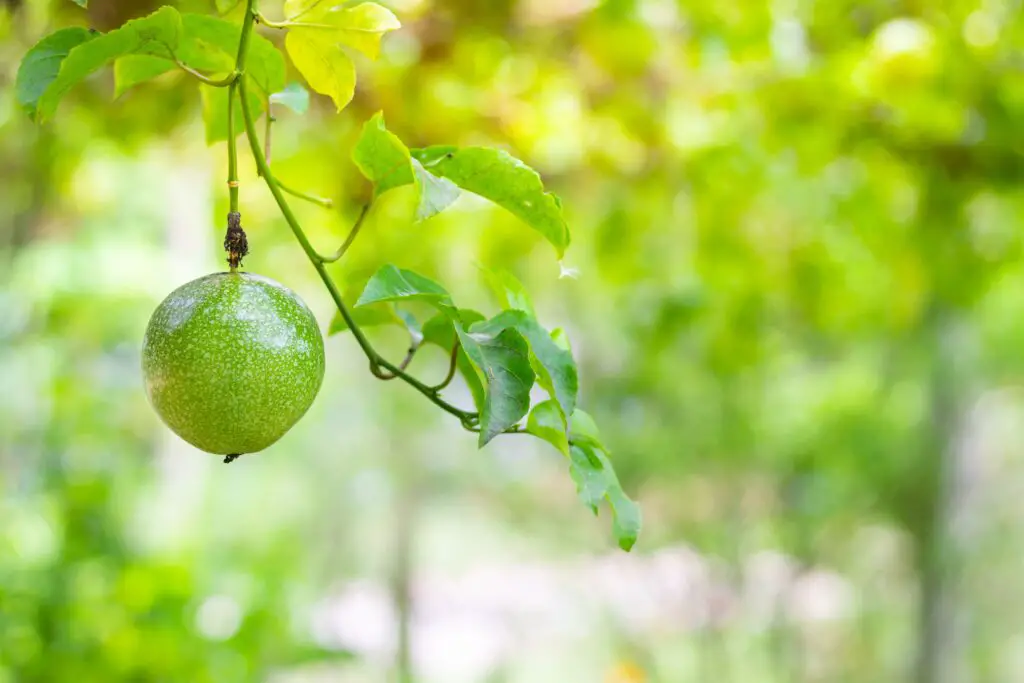
Passion fruit leaves turning yellow is a common issue that many gardeners face. There are several factors that can cause this problem, including weather, sunlight, and temperature. Understanding the role of these factors can help you identify the cause of yellowing leaves and take appropriate measures to remedy the situation.
Role of Weather
Weather is one of the most significant factors that affect the health of passion fruit plants. Extreme weather conditions, such as cold, heat, and drought, can cause stress to the plant, resulting in yellowing leaves. In colder regions, passion fruit plants may suffer from cold weather, which can damage the leaves and cause them to turn yellow.
Impact of Sunlight
Sunlight is another critical factor that affects the health of passion fruit plants. While these plants require a lot of sunlight to grow, direct sunlight can cause the leaves to turn yellow.
When exposed to direct sunlight for an extended period, the leaves can become scorched, leading to yellowing and wilting. On the other hand, insufficient sunlight can also cause yellowing leaves.
Effect of Temperature
Temperature is another essential factor that affects the health of passion fruit plants. In colder temperatures, the plant may not be able to absorb nutrients from the soil properly, leading to yellowing leaves.
In contrast, high temperatures can cause the plant to lose water through transpiration, leading to dehydration and yellowing leaves. Additionally, sudden temperature changes can also cause stress to the plant, leading to yellowing leaves.
Watering and Drainage Issues
Passion fruit plants require consistent watering to maintain healthy growth. However, improper watering can lead to yellowing of the leaves. In this section, we will discuss the common watering and drainage issues that can cause passion fruit leaves to turn yellow.
Overwatering
Overwatering is one of the most common reasons for yellowing of passion fruit leaves. When a plant receives too much water, the roots may become waterlogged and unable to absorb oxygen. As a result, the leaves may turn yellow and wilt. In severe cases, overwatering can cause root rot, which can be fatal to the plant.
To prevent overwatering, ensure that the plant is not sitting in water and that the soil is well-draining. Check the soil moisture level regularly and only water the plant when the top inch of soil is dry. It is also essential to ensure that the pot has adequate drainage holes to allow excess water to escape.
Underwatering
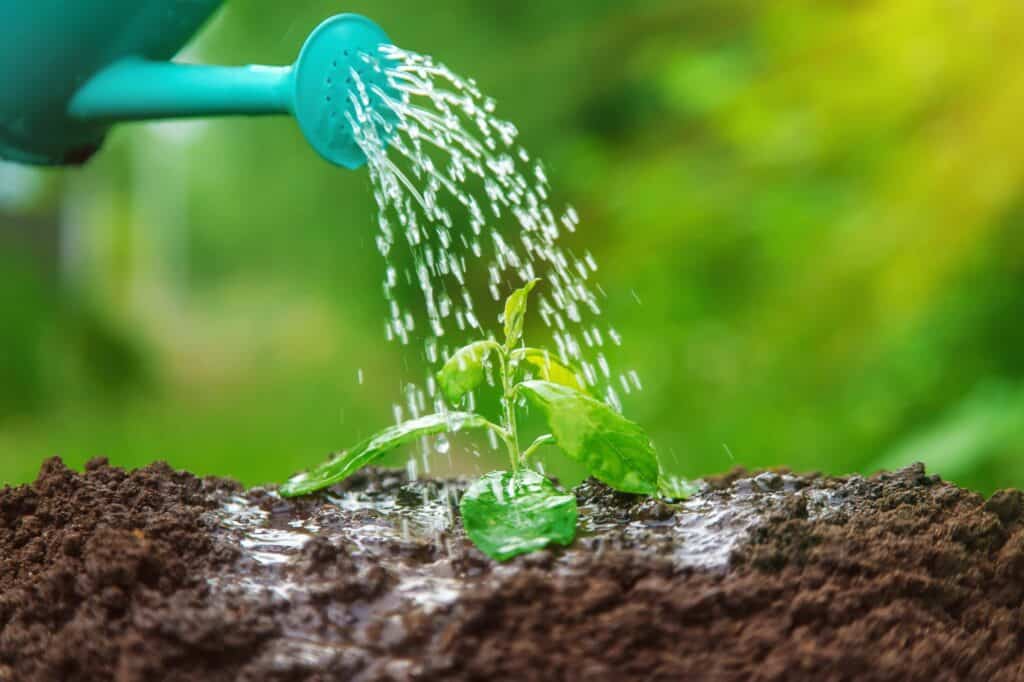
Underwatering can also cause yellowing of passion fruit leaves. When a plant does not receive enough water, it can become stressed, leading to yellowing and wilting of the leaves. In severe cases, the plant may die.
To prevent underwatering, ensure that the plant receives sufficient water. Check the soil moisture level regularly and water the plant when the top inch of soil is dry. It is also essential to ensure that the pot has adequate drainage holes to allow excess water to escape.
Drainage Problems
Drainage problems can also cause yellowing of passion fruit leaves. If the soil does not drain properly, excess water can accumulate, leading to root rot and yellowing of the leaves.
To prevent drainage problems, ensure that the pot has adequate drainage holes and that the soil is well-draining. Avoid using heavy soils that retain water, and ensure that the potting mix is not compacted. It is also essential to flush the soil periodically to remove excess salts that can accumulate and cause drainage problems.
Nutrient Deficiencies
Passion fruit leaves turning yellow can be a sign of nutrient deficiencies. When a plant lacks essential nutrients, it cannot grow to its full potential, and its leaves may turn yellow or brown. In this section, we will discuss the most common nutrient deficiencies that can cause yellowing of passion fruit leaves.
1. Nitrogen Deficiency
Nitrogen is an essential nutrient for plant growth and development. A lack of nitrogen can cause passion fruit leaves to turn yellow and stunt the growth of the plant.
Nitrogen is necessary for the formation of chlorophyll, which is responsible for the green color of leaves. Without enough nitrogen, the leaves cannot produce enough chlorophyll, leading to yellowing.
To correct nitrogen deficiency, gardeners can apply nitrogen-rich fertilizers or plant food to the soil. Nitrogen-rich fertilizers include blood meal, fish emulsion, and urea.
2. Iron Deficiency
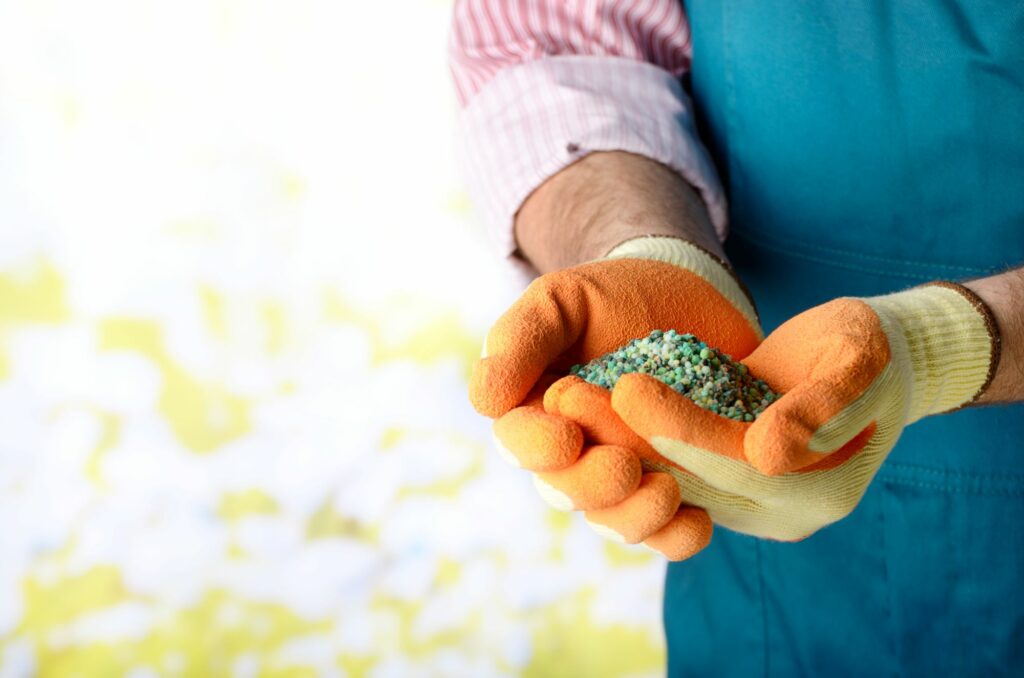
Iron is another essential nutrient for plant growth. Iron deficiency can cause passion fruit leaves to turn yellow, and the veins of the leaves may remain green. Iron is necessary for the formation of chlorophyll, and without enough iron, the leaves cannot produce enough chlorophyll, leading to yellowing.
To correct iron deficiency, gardeners can apply iron-rich fertilizers or plant food to the soil. Iron-rich fertilizers include iron sulfate, chelated iron, and iron EDTA.
3. Potassium Deficiency
Potassium is necessary for the proper functioning of plants. A lack of potassium can cause passion fruit leaves to turn yellow and curl at the edges. Potassium is essential for regulating water balance in plants and for the proper functioning of stomata, which are responsible for gas exchange.
To correct potassium deficiency, gardeners can apply potassium-rich fertilizers or plant food to the soil. Potassium-rich fertilizers include potassium sulfate, potassium chloride, and potassium nitrate.
Boron Deficiency
Boron is a micronutrient essential for plant growth and development. A lack of boron can cause passion fruit leaves to turn yellow and brown. Boron is necessary for cell wall formation and the proper functioning of meristems, which are responsible for plant growth.
To correct boron deficiency, gardeners can apply boron-rich fertilizers or plant food to the soil. Boron-rich fertilizers include borax, boric acid, and Solubor.
4. Magnesium Deficiency
Magnesium is an essential nutrient for plant growth and development. A lack of magnesium can cause passion fruit leaves to turn yellow, and the veins of the leaves may remain green. Magnesium is necessary for the formation of chlorophyll and for the proper functioning of enzymes.
To correct magnesium deficiency, gardeners can apply magnesium-rich fertilizers or plant food to the soil. Magnesium-rich fertilizers include Epsom salt, magnesium sulfate, and magnesium oxide.
5. Sulfur Deficiency
Sulfur is an essential nutrient for plant growth and development. A lack of sulfur can cause passion fruit leaves to turn yellow, and the plant may become stunted. Sulfur is necessary for the formation of chlorophyll and for the proper functioning of enzymes.
To correct sulfur deficiency, gardeners can apply sulfur-rich fertilizers or plant food to the soil. Sulfur-rich fertilizers include gypsum, elemental sulfur, and ammonium sulfate.
Diseases and Pests
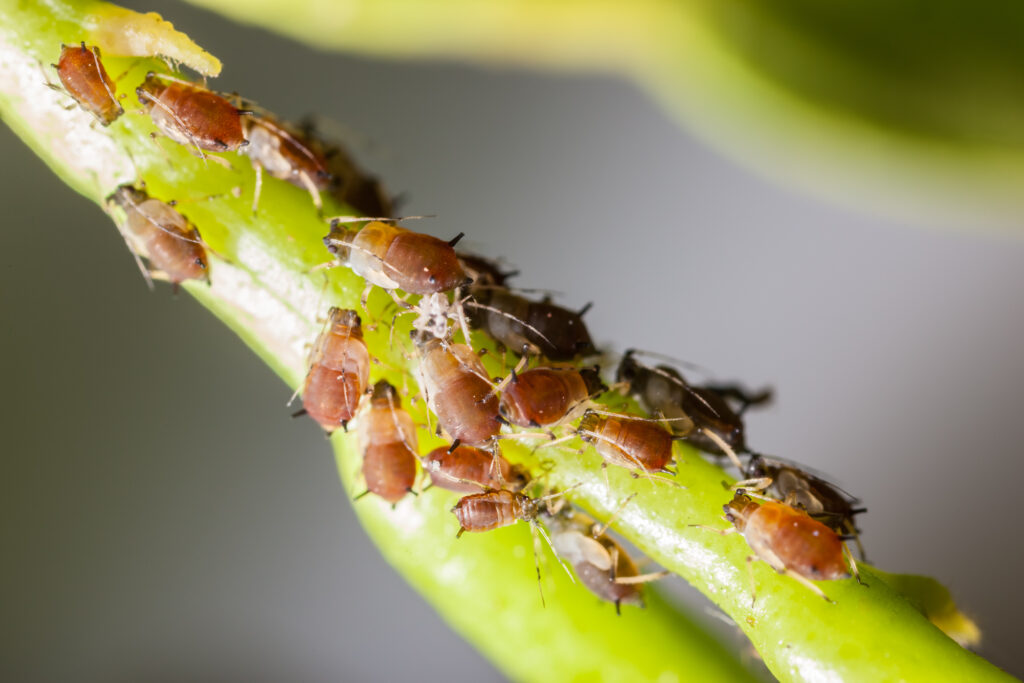
Passion fruit plants can be affected by various diseases and pests that can cause the leaves to turn yellow. In this section, we will discuss the most common diseases and pests that can affect passion fruit plants.
Viral Diseases
One of the most common viral diseases that can affect passion fruit plants is the cucumber mosaic virus. This virus is carried by aphids, and it can cause yellow patches on the leaves.
The leaves will eventually curl up and die. Unfortunately, there is no cure for this virus, and infected plants should be removed to prevent the virus from spreading to other plants.
Another viral disease that can affect passion fruit plants is the passion fruit woodiness virus. This virus can cause yellowing of the leaves, as well as stunted growth and fruit deformities. Infected plants should be removed to prevent the virus from spreading to other plants.
Insect Infestation
Insects can also cause yellowing of passion fruit leaves. One of the most common insects that can infest passion fruit plants is aphids. These insects can cause damage to the leaves by feeding on them, and they can also carry the cucumber mosaic virus.
To control aphids, insecticidal soap can be used. Insecticidal soap is a type of soap that is specifically designed to kill insects. It is safe for use on most plants, including passion fruit plants.
Another insect that can infest passion fruit plants is scale. Scale insects are small, brown, red, or black bumps that can be found on the stems and veins of the leaves. They can be easily scraped off with a toothbrush or your fingers.
Plant Care and Maintenance
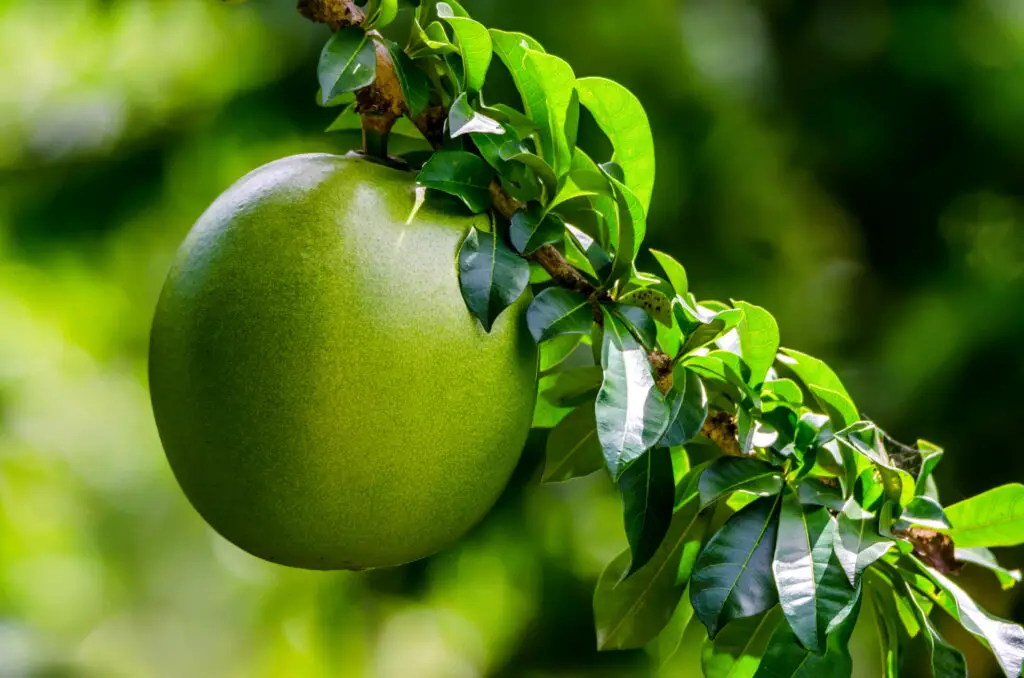
Passion fruit plants are relatively easy to care for, but they do require some attention to keep them healthy and thriving. In this section, we will discuss the different aspects of plant care and maintenance, including soil and fertilization, pruning and sunlight exposure, and plant structure and base care.
Soil and Fertilization
Passion fruit plants require well-draining soil that is rich in organic matter. During the spring and fall, it is recommended to add compost to the soil to improve its nutrient content.
Fertilization is also essential for the plant’s growth and fruit production. Tui Organic Seaweed Plant Tonic is a great option that provides the necessary nutrients, including potassium, phosphorus, and nitrogen. However, be careful not to over-fertilize, as this can lead to yellowing leaves and falling off of new growth.
Pruning and Sunlight Exposure
Pruning is an essential aspect of passion fruit plant care. It helps to promote healthy growth, increase fruit production, and keep the plant’s size under control. Prune the plant in the early spring before the growing season begins. Remove any dead or diseased branches, as well as any branches that are growing in the wrong direction.
Also, make sure to provide the plant with enough sunlight exposure. Passion fruit plants require a minimum of 6 hours of direct sunlight per day to grow properly. If the plant is not getting enough light, the leaves will become yellow and spindly.
Plant Structure and Base Care
The structure of the passion fruit plant is another important aspect of its care. If the plant is grafted, make sure to keep the graft union above the soil level to prevent black rot from developing.
Also, keep the base of the plant clear of debris and weeds to prevent pests and diseases from taking hold. Finally, make sure to water the plant regularly, especially during the hot summer months. However, be careful not to overwater, as this can lead to root rot and yellowing leaves.
Specific Plant Types
Passion fruit plants are known for their vigorous growth and beautiful flowers. However, when the leaves of these plants turn yellow, it can be a sign of a problem. In this section, we will discuss specific plant types and their characteristics that may contribute to yellowing leaves.
1. Potted Passion Fruit Plants
Potted passion fruit plants are a popular choice for gardeners who want to grow these plants in a limited space. However, potted plants can be more vulnerable to nutrient deficiencies and other issues that can cause yellowing leaves. To avoid this, it is recommended to use a high-quality potting mix that is rich in nutrients and to fertilize regularly.
2. Passion Flower Leaves
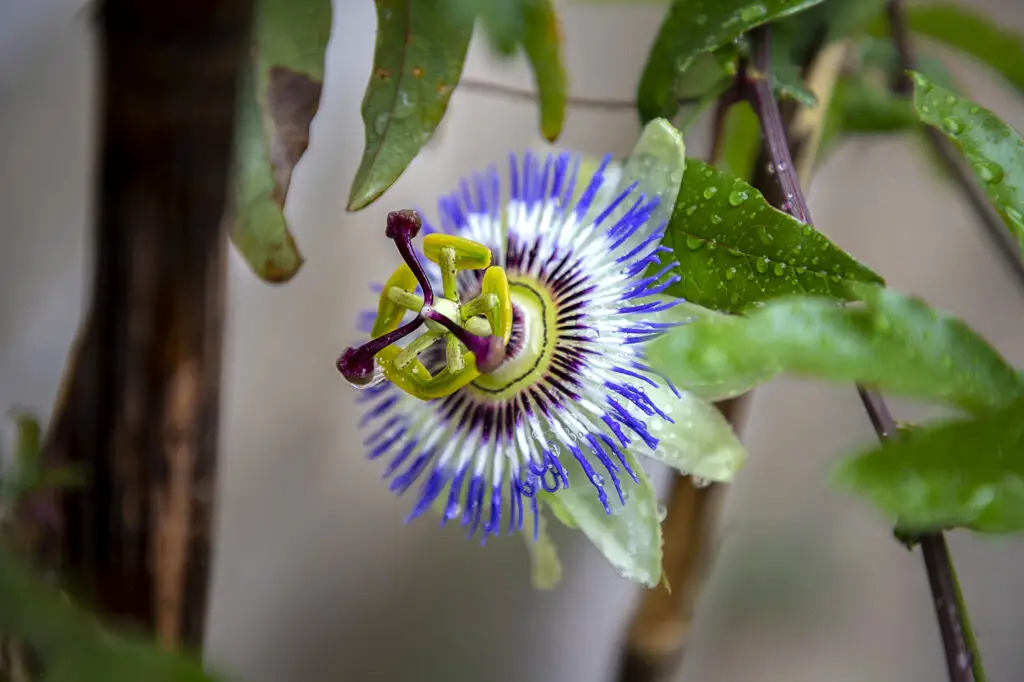
Passion flower leaves are known for their unique shape and vibrant green color. However, when these leaves start to turn yellow, it can be a sign of stress or disease.
Common causes of yellowing passion flower leaves include lack of sunlight, overwatering, or insect infestations. To prevent this, it is important to provide the plant with adequate sunlight, proper watering, and regular pest control.
3. Grafted Passion Fruit
Grafted passion fruit plants are a popular choice for gardeners who want to ensure a higher yield and better fruit quality. However, these plants can also be more susceptible to yellowing leaves due to graft incompatibility or other issues.
To prevent this, it is important to choose a high-quality grafting stock and to monitor the plant closely for any signs of stress or disease.
Frequently Asked Questions
What causes passion fruit leaves to turn yellow?
There are several reasons why passion fruit leaves may turn yellow. One common cause is a nutritional deficiency in the soil.
Passion fruit plants require a balanced supply of nutrients to grow properly, and a lack of essential nutrients such as nitrogen, phosphorus, or potassium can cause the leaves to yellow. Another common cause is overwatering, which can lead to root rot and nutrient deficiencies.
What are the common reasons for passion fruit leaves falling off?
Passion fruit leaves may fall off due to a variety of reasons, including pest infestations, disease, overwatering, or drought. In some cases, the plant may be experiencing environmental stress, such as too much or too little sunlight, which can cause the leaves to wither and fall off.
How can I prevent passion fruit leaves from turning brown or white?
To prevent passion fruit leaves from turning brown or white, it is important to maintain proper soil moisture levels. Overwatering can lead to root rot and nutrient deficiencies, while underwatering can cause the leaves to dry out and turn brown.
Additionally, it is important to provide the plant with adequate sunlight and nutrients to promote healthy growth.
What is the best fertilizer for passion fruit plants?
The best fertilizer for passion fruit plants is one that is high in nitrogen, phosphorus, and potassium. A balanced fertilizer with a ratio of 8-3-9 or 10-5-20 is recommended for optimal growth and fruit production. It is important to follow the manufacturer’s instructions for application rates and timing.
Can overwatering cause passion fruit leaves to turn yellow?
Yes, overwatering can cause passion fruit leaves to turn yellow. When the soil is waterlogged, the roots may become damaged and unable to absorb nutrients properly. This can lead to a nutrient deficiency, which can cause the leaves to yellow and drop off.
How often should I water my passionfruit plant?
The frequency of watering for a passionfruit plant depends on several factors, including the climate, soil type, and stage of growth. In general, it is recommended to water the plant deeply once or twice a week, depending on the weather conditions. It is important to avoid overwatering, as this can lead to root rot and other problems.

Hey, I’m Lisa and I’ve been an avid gardener for over 30 years. I love writing, talking and living in the garden! Feel free to connect with me on my socials below

